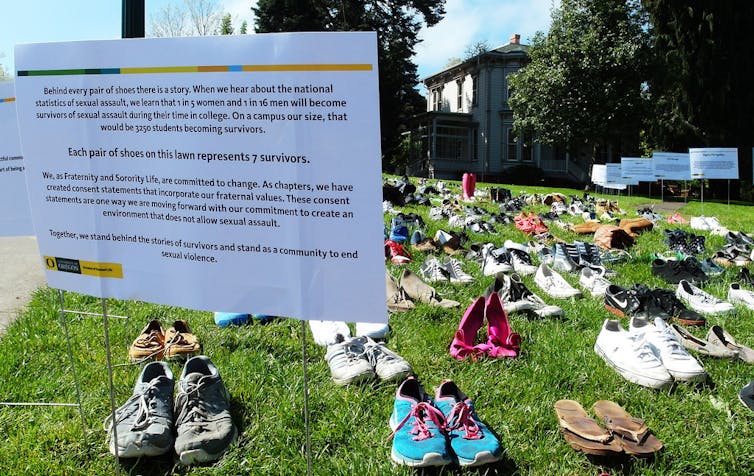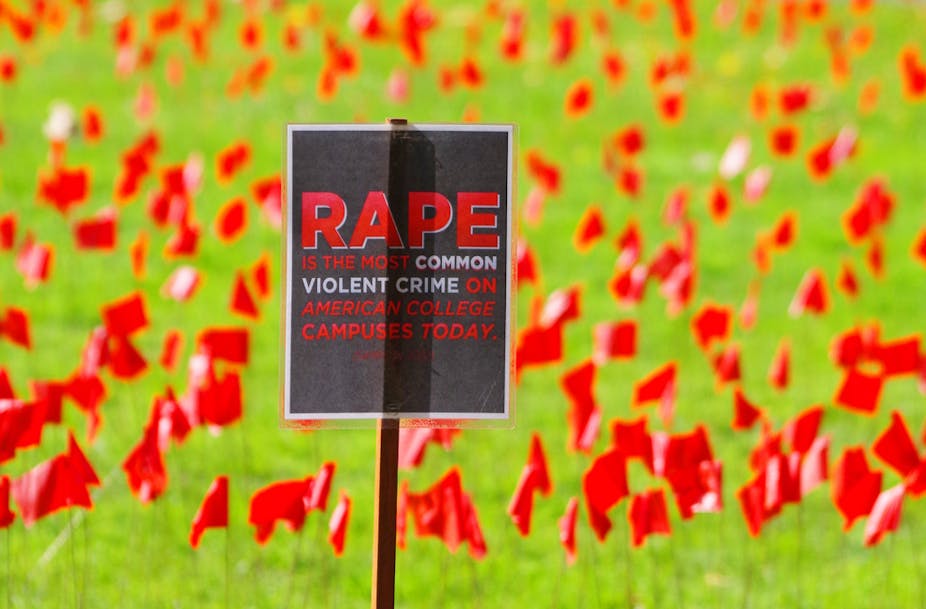The myth has been shattered. The college campus, it turns out, is not always a sheltered sanctuary of peaceful, rolling green lawns and ivy-covered brick.
The reality of sexual assault at college has been brought home by recent investigations by the Office for Civil Rights of no fewer than 85 universities in the US for their handling (or lack of handling) of sexual violence.
These investigations are just one part of a flurry of attention directed at colleges, from a series of high-profile rape cases to a White House report estimating that 20% of women on campus are subject to sexual assault.
Of course, rape is a crime about secrecy and shame. So, most cases of rape are never reported.
But in this age of global information, where so much data is freely published and shared online, surely the dawn is breaking. Or is it?
I recently led a research team that began examining how well university and college websites bring pertinent and relevant information to their students about how to prevent and respond to sexual assault on campus.
What can websites tell?
My colleagues and I began the study (currently being reviewed for publication) by listing all colleges that receive federal aid. We then randomly selected a sample of 150 to examine more closely.
Our research question was simple: if a student is a victim or a bystander of sexual assault, what help and guidance can they find from their university’s website?
To some adults, this question may seem nonsensical. Wouldn’t someone who had witnessed or been victimized by sexual assault simply pick up the phone? But the fact is that today the internet has become the primary, and preferred, place to go to for information for most youth.
And because it’s an impersonal and anonymous way of accessing knowledge, it often gets consulted before someone decides if they want to go to the authorities to report a crime.
Here is what we found:
First, the good news.
Overall, we found that it was unusual for colleges to completely ignore the topic of sexual assault; only 15% had literally no mention of it on their website.

Two-thirds or more of the websites did contain very general information about their policy, how to report a crime, and the campus police phone number.
Unfortunately, from there it all goes downhill.
Only one-third or fewer of the websites had any information that might be useful to a victim of sexual assault, such as a hotline number, the importance of preserving evidence or how to report sexual assault to police.
Most surprisingly, despite overwhelming evidence that sexual assault is underreported, and the resultant need for anonymous methods of reporting, only 15% of university websites offered any information about how to file an anonymous report.
Information that can save lives
Another bit of crucial information that was either missing or not emphasized enough was the need for immediate medical care.
As a parent I cannot emphasize enough how much I would want my son or daughter to understand the immediate and critical need for medical care, if ever she were to be a victim of sexual assault.
Such an assault can result in internal injuries, a sexually transmitted disease, and/or an unplanned pregnancy.
In addition, it can lead to psychological aftereffects that can include post-traumatic stress disorder, depression, extreme anxiety, and even suicide. Emergency medical teams can be literally lifesaving; they address physical needs, direct victims to psychological support and counseling, and help preserve evidence.
Yet of the 30% of college websites that mentioned the need for medical care, only 18.7% (not quite two-thirds) emphasized this need strongly.
That is, more than a third of the websites only used suggestive language, such as: victims should consider medical care, instead of describing how important medical care is for victims or using statements such as: it is important that you seek immediate medical attention.
It’s possible that some schools fear that by posting such specific, helpful information, they may be implying that sexual assault occurs on their campus. At other institutions, administrators may cling to the belief that rape is rare or even nonexistent at their college.
Information matters
Clearly, as this study has shown, colleges have far to go if they want to provide their campus communities with truly useful and meaningful online guidance in cases of sexual assault.
Institutions of higher education have options when it comes to what they want to post online. On the one hand, it’s not too hard to understand why campuses might not want to post, for example, the number of sexual assaults reported over the past year.
However, there is a great deal of important information that they could and should provide. If they have a policy regarding sexual assault, that information should always be provided.
Furthermore, they can post a lot of other information – the campus police number; a phone number for a sexual assault hotline; addresses or phone numbers for medical assistance (including emergency rooms or facilities that specialize in helping victims of sexual assault); and contact information for counseling or follow-up support after an assault.
None of this information leaves the impression that a campus is unusually unsafe. Instead, it leaves the impression that the campus community cares about preventing sexual assault.
Today, no campus can be assumed to be 100% safe, and schools can introduce information about sexual assault by pointing out that sensible precautions and access to quality information can help keep everyone safer and happier.
Ultimately, it’ll be pressure from parents and students to make such information available. And that is likely to be the most potent catalyst for change.

